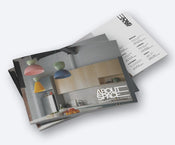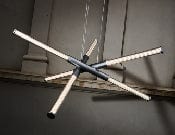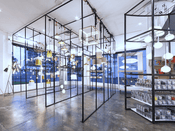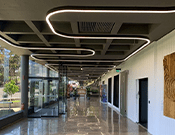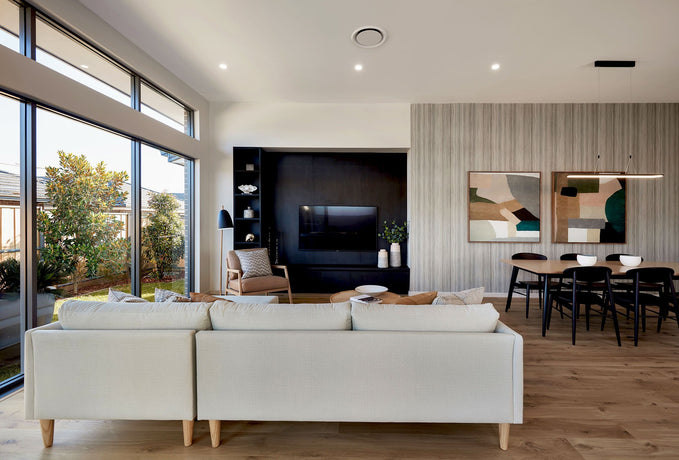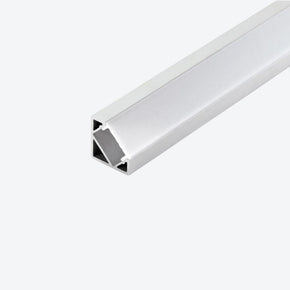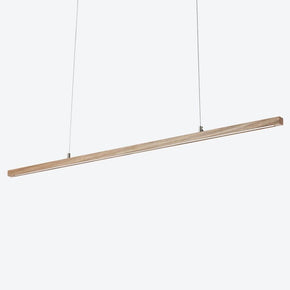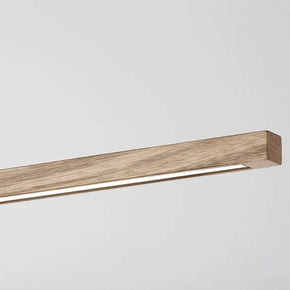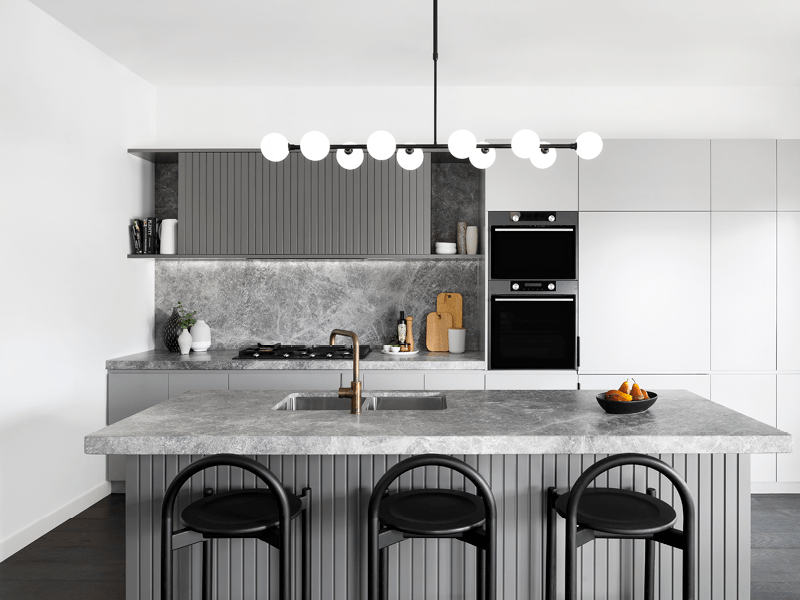- No products in the cart.
- ``
Are downlights safe? All you need to know
20
Apr
You know at About Space, we love downlights (or recessed lighting.) They’re sleek, sophisticated, and a great way to illuminate any room or building type.
There are simply so many things to love about downlights. Sitting flush with the ceiling and offering diffused light, they’re subtle and work well with any decor. They’re also cost and energy-efficient and are functional for mood or task lighting. But are downlights safe?
Poorly installed or traditional downlights are a huge fire hazard. Each year, many homes are damaged or destroyed due to incorrect installation or forgoing safety checks.
What causes dangerous downlights?
Downlights are a major cause of house fires. They heat up very quickly, so if installed incorrectly, can set fire to flammable litter or materials. Traditional downlights, which usually contain a halogen globe, are the culprit. This is because in comparison to other globes, such as LEDs, they can reach 240-degrees celsius! When in contact with leaf litter, dust, insulation and roof timbers, or essentially anything flammable, it can lead to quick ignition and fire in your roof.
With all this in mind, if your downlights are installed correctly and positioned clear of flammable materials, there is no risk of fire.
The importance of downlight safety
It’s really important to know what you can do to prevent these fires, and ensure your downlights are safely installed. Fortunately, the government has recognised the potential problem associated with downlights, and have implemented strict regulations for installation.
It’s advised you always use a reputable electrician for any job, as they’re fully trained in safely installing downlights. With such a high number of house fires caused by downlights, the government has even amped up education and training for electrical contractors.
Even so, in the electrical industry it’s still possible for regulations to be ignored in order to cut costs and time, or you might encounter an electrician who’s simply not experienced enough. That’s why it’s important to find a skilled and reputable electrician, or know the signs of a dodgy downlight, to ensure your safety.
Most commonly asked questions about installing downlights
Compared to normal downlights, fire-rated or IC4-rated downlights (which are more common) help protect your home from fire. They maintain the fire rating of a ceiling where the downlight hole was cut, by ‘blocking’ this hole and slowing a fire spreading between floors.
It’s not required, but it is highly recommended in order for higher protection in your home. IC4-rated downlights are more common, however, and reduce and slow the spread of a fire, so it’s worth investing in.
Yes, however, they need to be a particular type of downlight. We recommend an IC-F or IC4 downlight, as they are the only ones with a high enough safety rating. However, due to lack of ventilation, if you chose to cover them with insulation, it is likely the product won’t last as long.
It is not a requirement, but it is recommended. IC4-rated downlights are designed to be covered by insulation, therefore heat covers aren’t so much for safety. Because hot air can rise through your roof through your downlights, it can be harder to keep your home warm. Heat covers can help you save energy and money on heaters during the colder months, as they stop the hot air from escaping.
Depending on the mode, they can get anywhere between 60 to 100 degrees celsius.
If your downlights are installed correctly and positioned clear of flammable materials, there is no risk of fire.
If you didn’t already know, there are requirements for lights in bathrooms in Australia. You can put downlights above a shower; however, they need to comply with zone 1 standards. This means they need to be placed up to 2.5m vertically above the shower, and have a rating of IP65. For an in-depth guide on the requirements, we’ve written an article with everything you need to know about bathroom lighting.
Again, while it’s not a requirement, you should make sure every downlight in your house is IC4-rated. IC4-rated or fire-rated downlights improve the safety of your home, yourself, family and neighbours.
Tips on ensuring downlight safety
Whether you want to install new downlights or check existing lights, there are simple steps you can follow or things you can check, to ensure the safety of yourself, others, and your home.
- Ensure electricity is always switched off when attempting electrical work
- If you’re using incandescent or halogen globes, consider changing to LED lights. These are a lot more energy-efficient and produce less heat, which will reduce potential ignition with flammable materials.
- Always use a licensed electrician.
- Smoke alarms only detect smoke below the ceiling, so regular inspection of downlights, particularly if halogen, is important. If you recognise any melted or short-circuited wires or evidence of burning around the light, then it’s important to switch these off and have them changed immediately by your electrician.
- Particularly for homes built before 2008, it could be a good idea to make the change to LED or get your lights inspected. This is because there weren’t strict guidelines or rules regarding installation for older homes, which are usually the majority of homes destroyed by fire.
- Ensure you’re using IC4-rated downlights and that the fittings and guards meet Australian standards.
- After any work has been done on or in the roof, ensure your main power is switched off and inspect all downlights, making sure they haven’t been damaged and are clear of flammable materials.
- Never exceed the maximum wattage of the globe.
- Keep your roof area clean, in case there is any fallen material from the insulation or other flammable materials or litter.
Make a switch to LED
No one likes to worry about the place you should feel safest: home. Simple household changes, such as switching to LED, can give you peace of mind.
If you haven’t already considered changing, we have 50 reasons that might entice you to make the switch. Once you decide to convert to a more energy-efficient and safe globe, it’s pretty easy to swap over. Check out our article to find out all you need to know about converting to LED.
Still need some help?
If you need advice on which lighting solutions can complement your home, get in touch with the About Space team. We can guide you through choosing downlights and the right globes to transform your space. You can also shop our full range here.


